19+ SAMPLE Email Memo
-
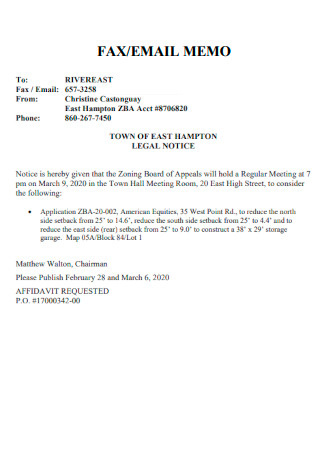
Fax & Email Memo
download now -
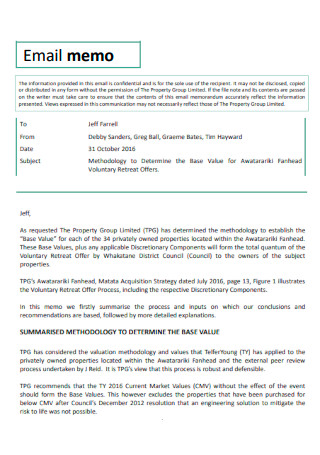
Sample Email Memo
download now -
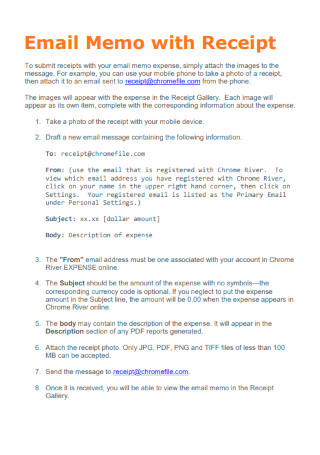
Email Memo with Receipt
download now -
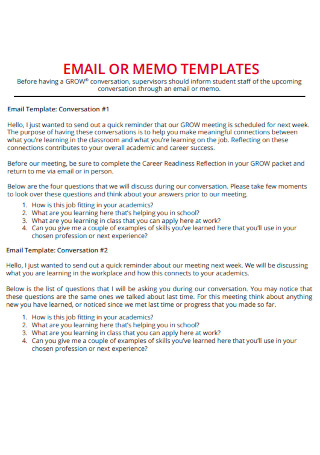
Basic Email or Memo
download now -
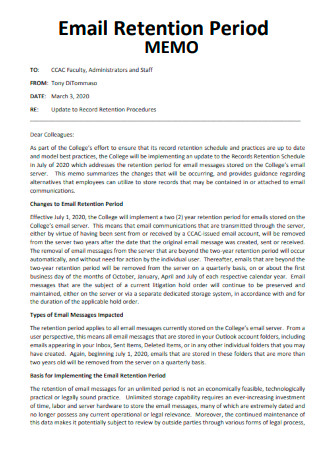
Email Retention Period Memo
download now -
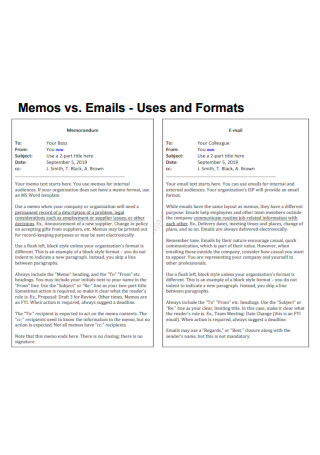
Memos vs Emails Uses and Formats
download now -

Printable Email Memo
download now -
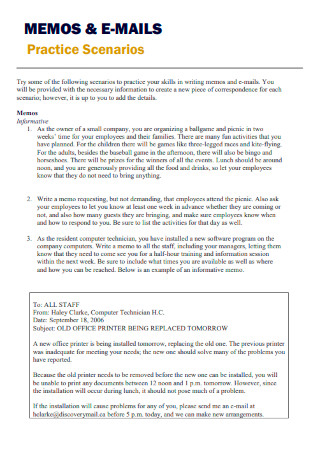
Memos & Emails Practice Scenarios
download now -
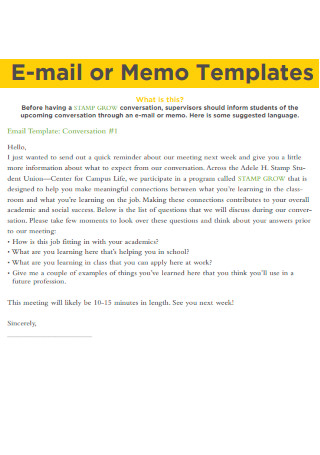
Editable Email or Memo
download now -
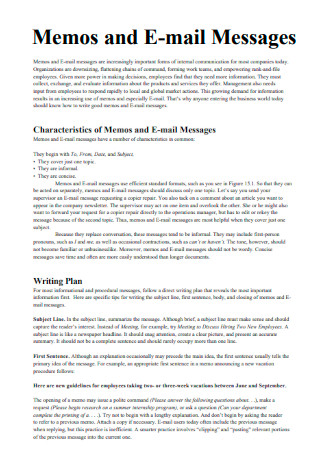
Memos and Email Messages
download now -
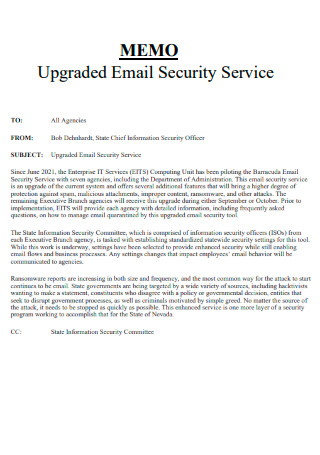
Upgraded Email Security Service Memo
download now -
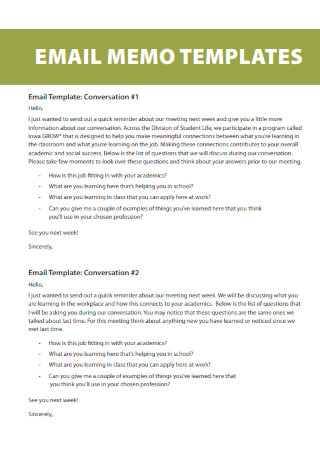
Formal Email Memo
download now -

Email and Other Messaging Service Memo
download now -
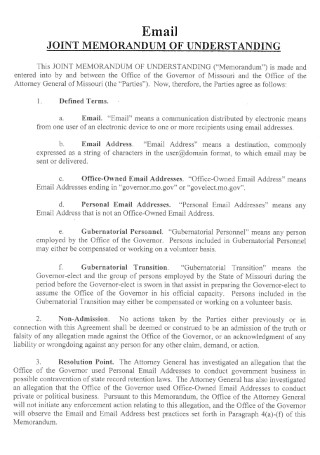
Email Joint Memorandum of Understanding
download now -
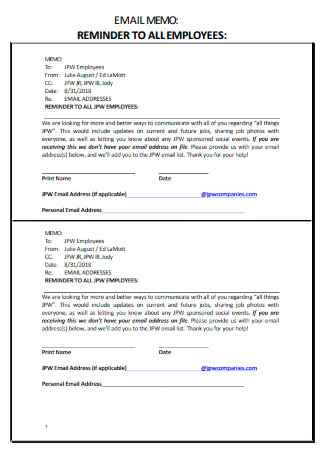
Reminder to all Employees Email Memo
download now -
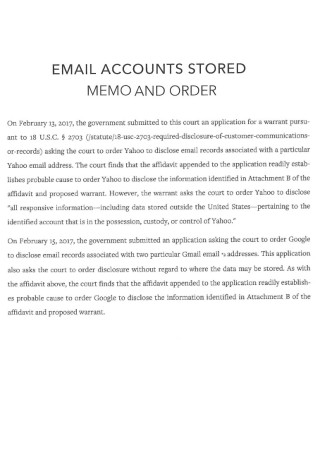
Email Accounts Stored Memo and Order
download now -
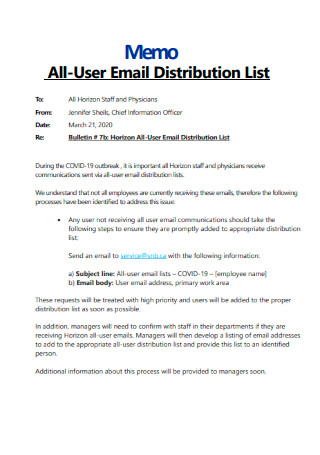
All User Email Distribution List Memo
download now -
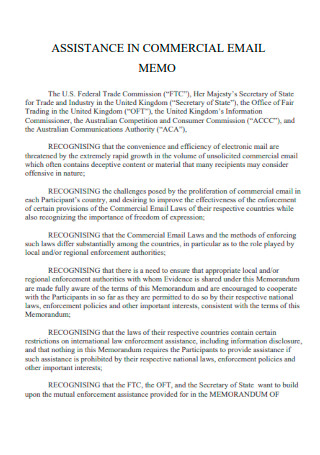
Assistance in Commercial Email Memo
download now -

Emails & Password Reset Memo
download now -
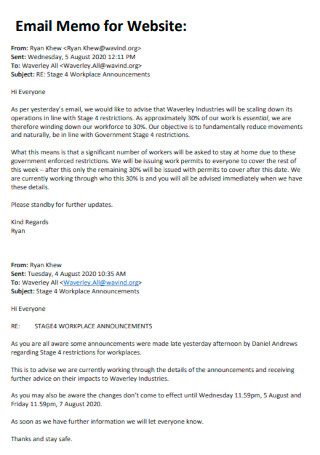
Email Memo for Website
download now
What Is an Email Memo?
A Memorandum, or memo, is a document that contains a message and is used to transmit or communicate information within the company or organization. The main objective of memos is to convey company policies, procedures, or any affiliated official business. Memos are usually intended to be read in one setting and serve to deliver news, directions, and information to multiple recipients, meetings, or even calling people to action. Unlike formal letters, email memo to employees does not necessarily have a greeting or closing remarks. To save you time, you can utilize the email memo template provided.
Tips for Writing an Email Memo
Even though email memos are often regarded as a means of informal communication within the Company, they should still be treated seriously. From the drafting of the contents to a more careful process of editing to ensure the message included cannot be misinterpreted. It is best to avoid situations where the email memo may be worded with double meanings and cause confusion to the recipient, which could lead to the disarray of employees. This is why this curated list has been made to deliver you essential tips on the process of writing an email memo.
Advantages of Email for Internal Communications
In the digital age, there are various means of communication that are utilized for a diverse set of purposes and different organizations or companies. But most companies will turn to email to efficiently deliver their messages for internal and external communication. If you are not so familiar with utilizing emails, then give this curated list a read to be aware of the advantages that you gain by making use of emails to send out memos within your company. Continue reading the article for the guide on how to write your email memo to be sent out to your employees.
How to Write an Email Memo
According to Statista, in 2020, it was estimated that 306.4 billion e-mails were sent and received per day, but by 2025, that number is expected to rise to nearly 376.4 billion per day. Memos are often sent through emails nowadays. You may actually be new to the process of writing one despite having experienced receiving hundreds, thousands, or more in your life. This is why this article includes steps on the guidelines of what you should follow as you write a memo. Even though an email memo format has been provided, make sure you are still following what your company policy has dictated.
-
1. Add a Heading and Overview
The sender, the recipient, the date, and the subject must all be specified in the memo’s heading. When you write a person’s name on a memo, follow it with their work title. In the sender field, put your own job title after your name. The overview, which follows the heading, provides a quick summary of the memo’s contents. Introduce the memo’s goal, such as presenting a concept or responding to a specified assignment, in the overview. The overview gives the reader a general understanding of what the memo is about, allowing them to decide whether or not to read it right away.
-
2. Context and Background Section
The context section of a memorandum provides background information for the message delivered. This makes it easier for the reader to comprehend how the message relates to business dealings. This statement, and others like it, assists the reader in placing the memo in perspective with the rest of the company’s activities. Adding a context and background paragraph, even if it wouldn’t be over two sentences, can help to clarify the intentions of the memo.
-
3. Tasks and Solutions
If the purpose of your memo is to explain the tasks that you will be performing in response to the context, you can say so in the next part of the memo. This gives the reader an idea of the next steps you are taking. If your memo is to present a resolution, you should write to explain the decisions that your company has reached regarding a particular concern of the Community that directly affects your company and respective employees.
-
4. Supporting Research and Ideas
Some memoranda necessitate the inclusion of specifics. If you want to include statistics, data, or facts from market research or information provided by the company, this is where you will start a new paragraph. If you were writing about technology market research, for example, you would include statistics on client demand and competition sales, as well as crucial industry statistics. The memo’s discussion section contains these supporting points.
-
5. Conclusion and Further Inquiries
Finish your memo with a quick conclusion that explains what you hope the reader learned from reading it. You should also let the readers understand that you welcome questions and comments for discussion in the concluding part. You might, for example, urge the reader to contact you through email or phone if they have further inquiries regarding the subject sent. This is also where you might also let them know of an upcoming Business Meeting on the subject.
-
6. Documents and Other Attachments
Attach diagrams, tables, policies, reports, minutes, or other business documents to the back of the memo if you use them in your memo. You may provide a graph that shows the costs and possible benefits of new technology or include a paper regarding the innovation. Make a note at the bottom of the memo page that one or more files are attached.
What is the difference between an email memo and a letter?
A Memo is a concise official document intended to inform, instruct, or advise members of the same company. However, the company deals with a variety of external parties, including consumers, clients, suppliers, government agencies, producers, societies, and so on, for whom a business letter is employed. A letter is a brief statement issued by a corporation to a person or entity that is not a customer.
What does an email memo look like?
This article provides you with a memo email example so you can get a clearer picture of what an email memo would appear like. It should also be mentioned that there are guidelines on what a memo should not be. This specifies that long sentences and wording should be avoided. There is no need to use a salutation. You should simply begin with the memo’s subject. To express your message, use bulleted lists and headings.
What is the purpose of a memo?
Memos mainly serve two purposes since they draw attention to problems and they help to fix them. They achieve their objectives by alerting the reader about new information, such as Policy changes or price hikes, or by urging the reader to take action, such as attending a meeting or changing and improving the current means of production.
Sending a memo via email will not only provide you with the ease of communicating with either a specific individual or multiple recipients but also efficiently handle an exchange of inquiries or concerns. This is why this article has provided you with a business memo email template so you can save time rather than starting from scratch, but of course, you will need to cater to the specific needs of the company.
